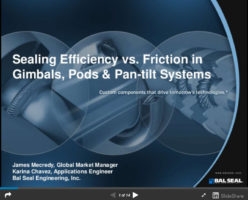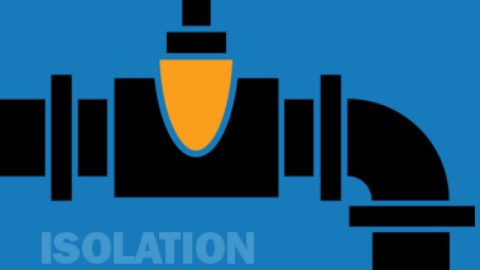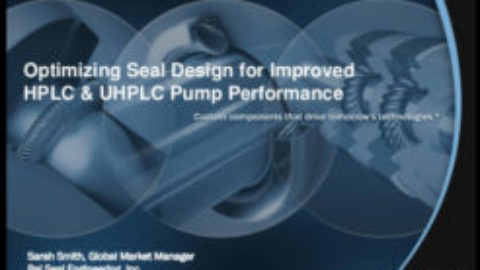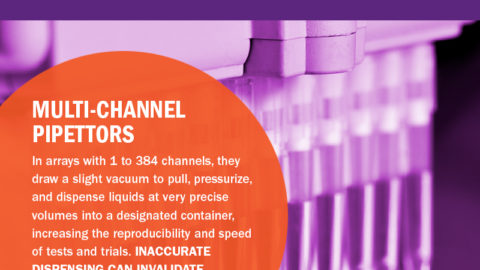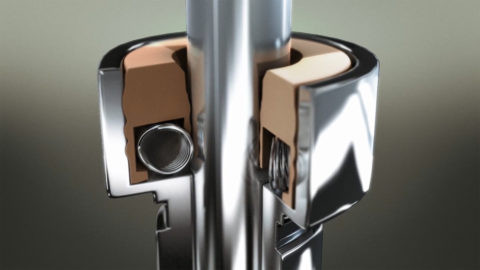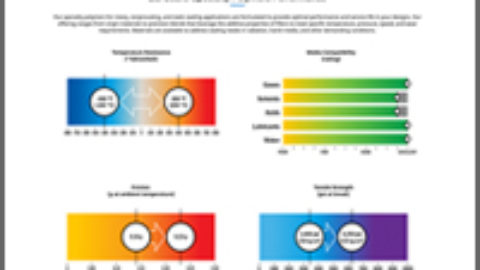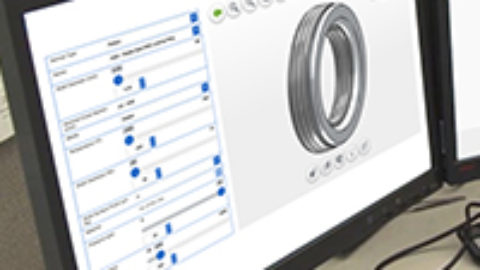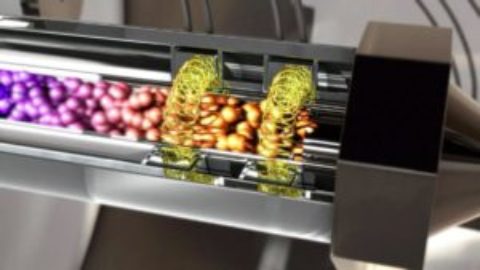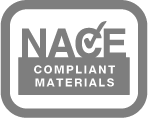To maximize gimbal performance, it’s essential to use a gimbal seal that protects your equipment in harsh environments and enables precision targeting in extreme conditions such has high speed, high vibration, and adverse weather conditions.
With the Bal Seal® spring-energized seal, you can finally achieve the elusive balance between friction and sealing effectiveness. Our seal combines low friction materials, a canted coil spring energizer, and custom jacket profiles to improve accuracy and reliability in gimbals, pods, pan-tilt systems and other demanding rotary/oscillating applications.
In the presentation below, we’ll examine the challenges between seal design and gimbal performance.
Sealing Efficiency vs. Friction in Gimbals, Pods & Pan-tilt Systems from BSEmarketing
Gimbal Seal Design Considerations
When creating a gimbal seal, there are 4 design factors that must be considered:
- Friction. Low friction and low stiction are necessary for precision pointing and stability. It also drives the selection of other system components.
- Sealing efficacy. Sealing while still meeting friction requirements is critical. It helps prevent environment contamination by sealing moisture, dirt, salt, and dust.
- Survivability. It’s important that your gimbal seal can withstand a large temperature range, vibration conditions, rotation, and high speeds.
- Seal life. Your seal must meet field maintenance requirements.
Factors that Affect Gimbal Friction
To optimize the performance of your gimbal seal, it’s essential to minimize friction.
Some factors that help reduce friction in your gimbal, pod, or pan-tilt system include:
- Material choice
- Seal profile – geometry that minimizes contact without compromising sealing performance
- Seal size
- Hardware
- Media type
- Seal usage after thermal cycling
- Pressure
- Speed
Bal Seal Engineering’s spring-energized seals are made from PTFE material that provide a low coefficient of friction, low stick-slip, increased wear resistance, and a large temperature range. Additionally, the spring energizer inside the seals provides the optimal force for balance of sealing effectiveness.
Consult with a Bal Seal Sealing Expert
To eliminate costly mistakes and delays, consider sealing requirements as part of overall system design. In early design stages, Bal Seal Engineering can help custom design a gimbal seal that meets all your application requirements, produce high-quality seal prototypes, and transition from successful prototype to full production.
